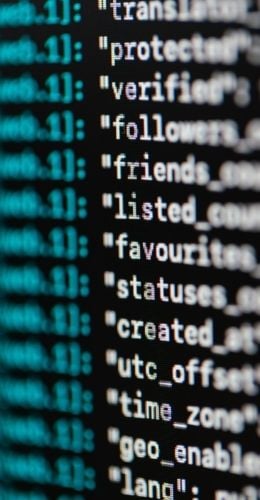 CHALLENGE
CHALLENGECyberattacks such as phishing, malware, ransomware, and data breaches have become all too common. Perhaps you or someone you know has been a victim of a cybercrime such as credit card fraud or identity theft. Instances such as these underscore the importance of cybersecurity professionals to protect against and respond to these rising threats.
With our growing reliance on technology over the past 20 years, the cybersecurity field has transformed from a mere concept to one of the most in-demand areas of today’s digital world. To meet this demand, Neumann University’s Master of Science in Cybersecurity equips the next generation of experts with the knowledge and skills for successful careers in cybersecurity.
Before we talk more about this innovative program, let’s first take a closer look at the evolution of cybersecurity.
The History of Cybersecurity
At the turn of the 21st century, the importance of cybersecurity was an afterthought for many organizations. There were few regulations and standards in place to protect against malicious attacks. Professionals relied heavily on manual processes and “signatures” that identified known viruses and struggled to deal with new or what is now called zero-day attacks. In other words, they had to wait until a virus appeared before they could recognize it and respond accordingly.
With the advent of eCommerce and the remarkable rise in internet usage, the world saw a dramatic rise in malicious activity. Cybercriminals took note of this new territory ripe for exploitation, unleashing a veritable tsunami of worms, malware, phishing attacks, distributed denial-of-service (DDoS) attacks, and data breaches — forever changing the future of cybersecurity.
Introduction of Firewalls and Antivirus Software
In response to these growing threats, the introduction of firewalls and antivirus software in the late 1980s and early 1990s was a significant step forward in the history of cybersecurity. This evolution in cybersecurity helped protect networks from unauthorized access by acting as barriers between trusted and untrusted networks. Meanwhile, antivirus software, such as Norton, McAfee, AVG, and Kaspersky, helped detect and remove malicious code from computer systems used in homes and businesses worldwide.
Emergence of Cybercrime and the Need for Specialized Professionals
As cybercrime became more prevalent, organizations began to recognize the importance of cybersecurity in protecting their networks and data from malicious attacks. Cybercriminals were taking advantage of ever-evolving techniques and technologies such as botnets, social engineering, malware, and ransomware to target businesses worldwide. As a result, companies began to invest heavily in cybersecurity jobs and measures such as encryption, authentication systems, multifactor authentication (MFA), intrusion detection systems, and centralized event management.
Expanding Tech Leads to More Cyber Threats
The evolution of cybersecurity and technology go hand in hand. While innovations in the way we live, work and learn have undoubtedly had a positive impact, they have also provided cyber criminals with countless avenues for malicious activities. To further explore the evolution of cybersecurity, let’s look at a few innovations that have fueled cybersecurity growth.
Deepfake Technology
Although the term “deepfake” was not introduced until 2017, its roots can be traced back almost 20 years earlier. In 1997, Christoph Bregler, Michele Covell, and Malcolm Slaney developed the Video Rewrite program.1 This software altered preexisting video footage of an individual speaking to make it appear as if their mouth movements corresponded to different audio being played.
Today, deepfake technology can be used to generate realistic images, videos, and audio. While a remarkable advancement, this technology carries profound implications for the evolution of cybersecurity. In fact, cybercriminals are already leveraging this technology to craft websites and email messages in an effort to steal personal information from unsuspecting victims.
Artificial intelligence
Artificial intelligence (AI) is one of the most significant breakthroughs in cybersecurity history, given its ability to learn and anticipate potential threats. Through machine learning, AI systems can continuously analyze data for signs of malicious activity and identify possible attack vectors.
However, while AI advancements have highlighted the importance of cybersecurity, criminals have also harnessed this technology to swiftly adapt their tactics and evade traditional security measures. With AI, criminals can automate tasks such as phishing, malware attacks, and data manipulation. AI-driven bots can also be used to launch more sophisticated DDoS attacks and targeted phishing campaigns.
The Internet of Things
The Internet of Things (IoT) has significantly influenced the evolution of cybersecurity. Coined by Kevin Ashton in 1999 to promote radio frequency identification technology, the term now refers to devices with sensors, software, and network connectivity that collect and exchange data over the internet. The IoT now encompasses smart appliances, automobiles, and wearable devices like smartwatches and fitness trackers.
While the IoT has allowed for greater convenience and automation in our daily lives, it is also introducing new challenges in the cybersecurity field. IoT devices are often insecure by design and can be exploited to gain access to networks or launch attacks. For example, hackers have taken control of IoT devices such as security cameras and smart TVs to spy on users or launch DDoS attacks.
Mobile Devices
The emergence of mobile devices represents a crucial shift in the evolution of cybersecurity. You’re very likely among the estimated 6.92 billion smartphone users in the world today.2 Unfortunately, this massive proliferation of mobile devices has made it easier for cybercriminals to target individuals on the go. By exploiting operating system or app weaknesses, attackers can access sensitive data such as usernames and passwords, financial accounts, and personal photos.
A significant milestone in the history of cybersecurity came in 2004 with the discovery of the first mobile malware, Cabir. Since then, mobile threats in the cybersecurity field have increased exponentially, with security programs successfully blocking millions of attacks every year.3

Neumann University’s Graduate Programs in Cybersecurity
An Overview of Cybersecurity Programs
Response and Adaptation
While the complexity of threats has grown throughout the history of cybersecurity, so have the methods for responding to and adapting to them. Solutions such as MFA, advanced encryption, sandboxing, attack frameworks, and risk-based authentication have all become increasingly important tools for those in cybersecurity jobs.
Additionally, in response to rapid cybersecurity growth, academic programs such as Neumann University’s MS in Cybersecurity have better-prepared professionals to design, develop, implement, and manage security measures that keep individuals and organizations safe and secure.
Multifactor/Two-Factor Authentication
MFA and two-factor authentication (2FA) represent a pivotal advancement in the evolution of cybersecurity. If you’ve ever had to enter a one-time code from a text or email to log into an account, then you’re already familiar with MFA/2FA. This measure adds an extra layer of security beyond traditional usernames and passwords by requiring users to provide multiple forms of verification before being granted access.
While AT&T claims to have invented 2FA in the 1990s, it didn’t catch on with users until the mid-2000s.4 Today, MFA/2FA has expanded to include biometric authentication, such as facial recognition and fingerprint scanning, making it an essential tool in the cybersecurity field.
Quantum Cryptography
Quantum cryptography, or quantum key distribution (QKD), is a groundbreaking innovation that holds immense promise for the future of cybersecurity. By leveraging the principles of quantum mechanics, this advanced form of secure communication protects information from interception or decryption.
Photon, the fundamental particle of light, is the key player in this revolutionary technology, facilitating the secure transmission of data and digital keys. In stark contrast to conventional encryption methods, QKD represents an unparalleled level of security that is considered virtually unbreakable.
Artificial Intelligence
AI has become an increasingly important tool in the fight against cybersecurity threats. Over the past 20 years, companies such as IBM, Cisco, and FireEye have implemented AI-powered solutions that use machine learning to detect and respond to threats in real-time.
For example, IBM’s Watson for Cybersecurity can analyze vast amounts of data and extract insights about threats that wouldn’t be visible to human analysts. Similarly, Cisco’s Cognitive Threat Analytics uses AI machine learning to detect advanced malware and phishing attacks that would otherwise go undetected.5
Ethical Hacking
Ethical hacking, also known as “white hat” or “penetration testing,” is the process of gaining permission to legally and ethically attempt to breach an organization’s security system. Ethical hackers use the same tools, techniques, and knowledge as malicious actors to test an organization’s defenses for weak points. This allows organizations to identify existing vulnerabilities and develop new security processes and strategies to protect their systems from malicious attacks.
Ethical hacking is an important component of cybersecurity training. With Neumann University’s hands-on ethical hacking courses, you can learn how to identify, examine, and mitigate vulnerabilities in networks and systems using the same methods malicious actors use. Our state-of-the-art dedicated student datacenter allows students to work directly with similar equipment used by professionals at a company or in the cloud to secure their infrastructures.
A Promising Outlook for Careers in Cybersecurity
With cyberattacks on the rise, cybersecurity growth has surged to new heights in recent years. In fact, the US Bureau of Labor Statistics (BLS) projects that employment in the cybersecurity field will grow 35 percent over the next decade, much more than the average for all occupations.6
In addition to this high demand, careers in cybersecurity are also financially rewarding. Information security analysts, for example, earn an average annual salary of $102,600, according to BLS data.7
Furthermore, an advanced degree — such as Neumann University’s Master of Science in Cybersecurity — can open doors to even more opportunities for careers in cybersecurity.
Read on to learn how to get into the cybersecurity field or advance your current career with Neumann’s Cybersecurity degree.
Start Your Neumann Cybersecurity Journey Today
As the evolution of cybersecurity forges ahead, staying updated on the latest trends is crucial for professionals in the field. Neumann University’s Master of Science in Cybersecurity is designed to equip you with sought-after skills and knowledge to thrive in the rapidly changing cybersecurity field.
Our 100 percent online program offers a comprehensive curriculum covering the history of cybersecurity as well as the latest trends and technologies for careers in cybersecurity. You’ll learn how to identify and mitigate cyber threats while developing the expertise to design and implement effective solutions that benefit the future of cybersecurity.
Whether you’re looking to advance your education or your current career in cybersecurity, Neumann can help you achieve your goals. Our flexible 21-month program is designed especially for working professionals, allowing you to balance your studies with your work and personal commitments. Additional benefits include:
• Receive the preparation needed for certifications such as Security+, Certified Ethical Hacker (CEH), the Systems Security Certified Practitioner (SSCP), and the Certified Information Security Manager (CISM).
• Learn from experienced faculty who are experts in the cybersecurity field.
• Gain the skills and knowledge required for cybersecurity jobs in a fast-paced, ever-changing environment.
• Network with other professionals in the cybersecurity industry.
• Earn a degree from a respected university.
If you’re interested in how to get into the cybersecurity field or advancing your career with a master’s degree, Neumann can help make it happen. Learn more about our MS in Cybersecurity to discover how to make your mark on the history of cybersecurity.
Sources
1. https://medium.com/@songda/a-short-history-of-deepfakes-604ac7be6016
2. https://www.bankmycell.com/blog/how-many-phones-are-in-the-world
3. https://www.cybertalk.org/2022/06/10/10-eye-opening-mobile-malware-statistics-to-know/
4. https://blog.lastpass.com/2021/12/the-evolution-of-multi-factor-authentication/
5. https://www.cxotoday.com/specials/top-5-brands-that-are-pioneering-ai-based-threat-intelligence-in-cybersecurity/
6. https://www.bls.gov/ooh/fastest-growing.htm
7. https://www.bls.gov/ooh/computer-and-information-technology/information-security-analysts.htm
